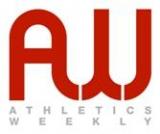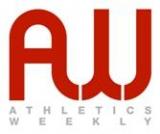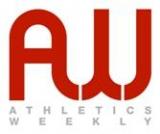Folders |
Mastering speed, with Stan MadiriPublished by
Stan Madiri, an IAAF elite speed coach, was at a recent England Athletics coaching conference and Matt Long was there to hear his thoughtsBased at the Lee Valley High Performance Centre, the well respected Stan Madiri has periodically worked with the likes of Olympic and world 400m champion Christine Ohuruogu and Commonwealth and European 200m silver medallist Jodie Williams to assist with their performance-enhancement. At a conference at Alexander Stadium, Birmingham, he began his delivery to Midlands and South West-based coaches by stating that speed is the ability to run fast with efficiency. Debunking speed mythsIn addressing the question as to whether speed is defined by nature or nurture, the Zimbabwean enthused: Every athlete has great the potential for speed. Speed is not a privilege; it s a skill.” Madiri is convinced speed can be developed by focusing on structural and functional movement elements of an athlete s technique. He is keen to debunk a second speed myth and continued: There used to be a belief that making athletes stronger would automatically make them faster. Now we know that this is not always true as there are other important elements to movement patterns and asserts that muscle recruitment is the weak link and not muscle strength.” Speed skill masteryThe UKA Level 4 sprints and hurdles coach, who has an IAAF elite coach” accreditation, is a fan of the quote, Amateurs practise and practise until they get it right. Professionals practise until they can t get it wrong. The job of the coach for Madiri is to take the athlete through the following stages of the expertise pathway model: Unconscious incompetence He said: Muscle memory is the accomplishment of the above the model represents the process you undergo to achieve it.” Structural dynamicsMadiri, affectionately referred to as ‘Fresh back in Zimbabwe, referred to what he terms control zones”, which for mechanical efficiency involve (a) multi-joint movement, (b) multi-plane movement and (c) multi-directional movement. He points out that the work set for a 100m runner may differ in this respect compared to a 200m or 400m runner. The 100m runner operates in a linear plane whereas the longer sprints involve rotational movements around the bends. Role of drillsLeading a practical-based session designed to prime acceleration with Dorchester s Kelly Allan under the keen eye of coach Dean Exton, Madiri explains that in terms of functional force management, a diversity of drills can aid force generation, force transmission and force dispersion. He added: Nature has decreed that we have a range of motion in our joints. Our own conditioning takes it away. Drills recondition and rewire what has been lost in lifestyle conditioning.” He feels that socialisation is the reason many youngsters end up mimicking the running movement patterns of their parents and peers and this can be detrimental. He worked with European sprint relay gold medallist Desiree Henry, pictured with Madiri above, for two seasons as well as helping to regenerate speed patterns for fellow relay gold medallist Asha Philip after a serious trampoline accident. Vmax stride mechanicsMadiri continued: If body position is off, we will struggle with all the other parts.” He emphasises the importance of foot strike, saying: It s what we are doing on the ground that gets us to move in terms of propulsion.” In terms of arm action he adds: A common mistake is to fail to drive the arms back and allow them to come back into position naturally”. He stressed the need to keep the wrists firm, but friendly”. Pointing out that we are bilateral animals” he warned: Carriage of a wide left arm, may for example, result in a wide right knee resulting in inefficiencies.” When it comes to stride recovery his mantra is put the force in, but don t go on holiday when the leg is at the back”. Case study: Usain BoltDiscussing the development of the world s fastest man, Madiri pointed out that coach Glen Mills has successfully worked over a number of years to optimise Bolt s posture, thus minimising injury and maximising speed. Mills is reported to have said: Usain is an extremely gifted athlete, but when I started working with him, one of the things that stood out was he was continually having hamstring problems. His body position put pressure on his lower back and there was a continual shift of his hip girdle, which resulted in a pull on his hamstring.” In pointing to Bolt s relatively poor mechanics, Mills has explained: Usain was running behind the centre of balance, resulting in a negative force against his forward drive.” Madiri added: Even at the time of his success at the World Youth Championships, Usain was running in the side plane, possibly because of a curvature of his spine and he was having to make compensatory movements.” Coach Mills set about speed reprogramming through (a) doing drills, (b) using videos to show him exactly what he was doing and (c) comparing these videos with the correct technical template for him. In reflecting back on his fantastic explosion onto the global scene at the 2008 Olympics, Mills has pointed out: In Beijing he showed a mastery of the technique that took years to achieve.” At those Olympics Bolt managed to minimise the compensatory performances which represented deviation from the technical ideal. As a result of altering structural stress ratios, Bolt achieved optimal performance over time and avoided overuse, persistent and poor force control injuries. For Madiri, Bolt has developed, the mechanical resilience to survive training and competition”. Talking about the role of the core and the trunk, Madiri described Bolt s power pot” as being able to control posterior and anterior movement and thus he is able to generate lots of hip movement, the effective stride length, in one stride.” The Jamaican superstar has developed a listening foot” in terms of positive support reflex and motor patterning, thus facilitating greater propulsion and shorter contact times. Case study: Christine OhuruoguMadiri speaks about his role assisting coach Lloyd Cowan in helping Christine Ohuruogu to re-educate Christine s injured leg”. He spent two blocks of six weeks working with Cowan and Ohuruogu because, while the injury had gone, the learning in the leg had also gone”. He said she admitted that she wished she had started movement efficiency training while younger. Madiri observes: She is not the most fluent athlete out there in the final, but she is so powerful and could go faster.” How athletes learnComparing Bolt to Ohuruogu, he said: Usain is seemingly a visual learner and needed to see the videos he would have to appropriately move the latter s leg into the correct biomechanical position. Christine is a kinaesthetic learner. She needs to feel her leg in order to effect change.” Dr Matt Long is a UKA coach education tutor. The role of England Athletics club and coach support officers in organising this years conferences is acknowledged The post Mastering speed, with Stan Madiri appeared first on Athletics Weekly. Read the full article at: www.athleticsweekly.com
More news |







